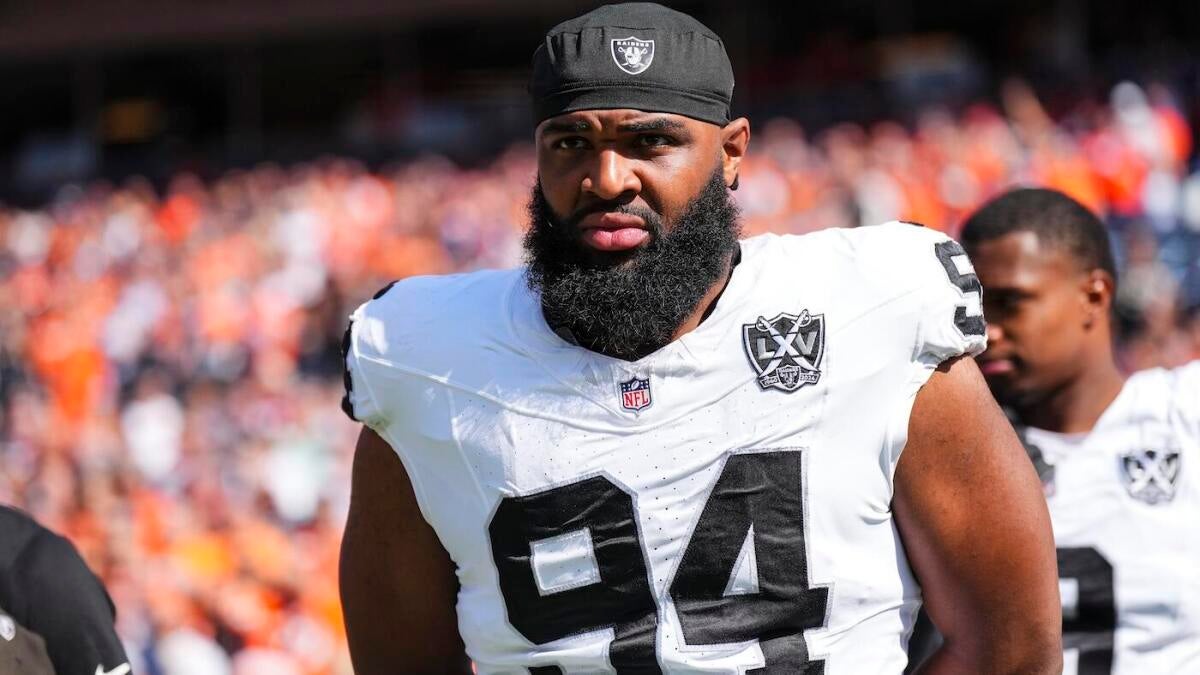The Evolving Landscape of Workplace Conduct in Professional Sports: The Christian Wilkins Case
Introduction: A Shift in the Locker Room Culture
The recent release of defensive tackle Christian Wilkins by the Las Vegas Raiders has ignited a conversation that extends far beyond the football field. Initially framed as a result of contractual disputes and a lingering foot injury, the narrative has since shifted to focus on an alleged incident involving a “playful kiss” that reportedly led to a teammate filing a Human Resources complaint. This case serves as a microcosm of the broader cultural shifts occurring in professional sports, where traditional locker room dynamics are being redefined by modern workplace standards.
The Incident: A Playful Gesture or a Boundary Violation?
The incident in question, as reported by ESPN’s Adam Schefter, involved Wilkins playfully attempting to kiss a teammate on the top of the head. While Wilkins is known for his jovial personality, the gesture was not received in the intended spirit. The teammate’s reaction—filing a formal complaint with the Raiders’ HR department—highlights a critical evolution in how professional sports organizations view workplace conduct.
This shift is not isolated to the NFL. Across industries, there has been a growing emphasis on respecting personal boundaries and understanding the nuances of consent. What might have been dismissed as locker room banter in the past is now being scrutinized through a lens of workplace harassment and professionalism. The Raiders’ response to this incident, culminating in Wilkins’ release, underscores the league’s commitment to fostering an environment where all players feel respected and safe.
Context Matters: Unpacking the Nuances
The interpretation of Wilkins’ actions hinges on several contextual factors. The relationship between Wilkins and the teammate, the history of their interactions, and the broader locker room culture all play a role in shaping the perception of the incident. Without a comprehensive understanding of these dynamics, it is challenging to fully grasp the teammate’s reaction.
For instance, the teammate may have had a personal aversion to physical touch, or the act may have felt demeaning or disrespectful in a specific context. Alternatively, there may have been pre-existing tension between the two players that influenced the teammate’s response. Regardless of the specifics, the incident underscores the importance of clear communication and mutual respect in professional settings.
The Raiders’ Response: A Reflection of Modern Workplace Standards
The Raiders’ decision to release Wilkins following the incident raises questions about the team’s priorities and values. While the team maintains that the release was not solely based on the kiss, the timing suggests that the HR complaint played a significant role. This decision signals a shift in how NFL teams handle workplace conduct issues, emphasizing a zero-tolerance policy for behavior that could be perceived as harassment.
However, this approach also raises concerns about due process and the potential for overreaction. Was Wilkins given a fair opportunity to explain his side of the story? Was the punishment proportionate to the offense? These questions are particularly relevant in cases where a player’s reputation and livelihood are at stake. The Raiders’ handling of the situation will likely set a precedent for how similar incidents are addressed in the future.
Financial Implications: The Voided Contract
The Raiders’ attempt to void the remaining guaranteed money on Wilkins’ contract—$35.2 million—adds another layer of complexity to the situation. Voiding a contract based on a behavioral clause requires substantial evidence of wrongdoing. The Raiders must demonstrate that Wilkins’ actions constituted a breach of contract, specifically violating team policies or ethical conduct standards.
The financial implications of this case are significant. If the Raiders succeed in voiding the contract, it would send a strong message to players that off-field conduct will have serious financial repercussions. Conversely, if Wilkins prevails, it would reinforce the sanctity of guaranteed contracts and underscore the need for clear and consistent disciplinary procedures. The outcome of this legal battle will have far-reaching implications for the NFL and the broader sports world.
Broader Implications: A Call for Change
The Christian Wilkins case serves as a reminder that even seemingly harmless actions can have significant consequences in today’s hyper-sensitive environment. It highlights the importance of clear communication, respect for personal boundaries, and comprehensive workplace training programs. NFL teams must proactively address issues of workplace harassment and ensure that players, coaches, and staff understand the organization’s expectations.
This includes providing education on topics such as consent, boundaries, and appropriate workplace behavior. It also requires establishing clear reporting mechanisms and ensuring that complaints are handled fairly and impartially. The Wilkins case underscores the growing power of players in shaping team culture and the need for organizations to adapt to this new reality.
A New Era of Accountability
The final analysis of the Wilkins situation will depend on the specifics of the investigation and any potential legal proceedings. However, the incident has undeniably sparked a crucial conversation about workplace conduct in professional sports. It serves as a wake-up call for teams to prioritize creating a more inclusive and respectful environment, where every player feels safe and valued.
The “playful kiss,” whether intended or not, may have inadvertently ushered in a new era of accountability in the NFL. As the league navigates this new era of heightened sensitivity, it must strive to create a culture where all players feel respected and valued. The Wilkins case is a testament to the evolving dynamics of professional sports and the ongoing need for organizations to adapt to changing societal norms.





